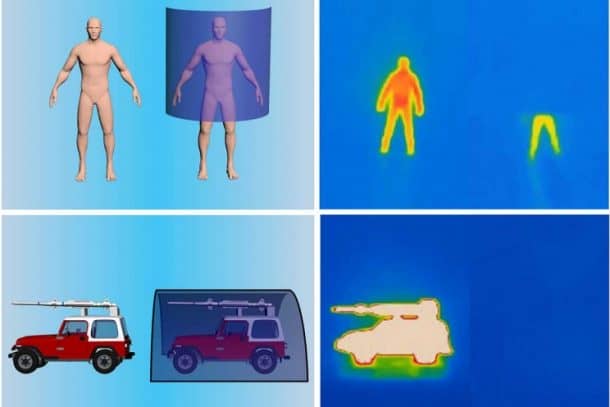The best tools for spotting targets at night or through thick fog or visual obstructions are still infrared cameras. Both pop culture shows and real-life scenarios use them as a go-to-tactic. A team with the University of Wisconsin-Madison has created a new device, stealth sheet, which has made it even harder for the heat-emitting creations to detect an infrared radar. The invention is developed by UMW engineers who said that objects and people were nearly invisible on infrared sensors when protected by the screen.
Hongrui Jiang Jiang, a researcher who serves as a professor of electrical and computer engineering at the University of Wisconsin-Medison, said, “What we have shown is an ultrathin stealth ‘sheet.’ Right now, what people have is much heavier metal armor or thermal blankets”. Humans, animals, and vehicles emit heat when they move or even exist. This heat comes off as infrared light. The new stealth sheet offers more than the heat-masking technologies which provide safety and security. Jiang said, “It’s a matter of the weight, the cost and ease of use.”

The sheet itself is only one mm thick, but the thickness does not define the effectiveness of the sheet. The sheet can absorb nearly 94% of the infrared light that it encounters. This is enough reduction to control whatever is beneath the cloaking material. Thus rendering it completely invisible to the best-infrared detection systems. The ‘Stealth Sheet’ also goes one step further and absorbs light in the mid-wavelength and long-wavelength infrared range. The light is often emitted by most humans and other creatures which exist in similar body temperature.
Jiang said, “You can intentionally deceive an infrared detector by presenting a false heat signature. It could conceal a tank by presenting what looks like a simple highway guardrail.” The team needed a material which was capable of consistently and effectively trapping infrared light. For that reason, Jiang and his team used black silicon. Black silicon absorbs light through the existence of millions of microscopic needles or nanowires. These nanowires are densely packed on the surface and face upwards. The incoming light reflects back and forth on the verticle wires and traps the material which was bouncing around within those wires rather than escaping out.
Jiang and his team made sure that they are the first ones to apply black silicon to trapping infrared. The team also improved the absorption of the silicon by adjusting how they created the material. Jiang said, “We didn’t completely reinvent the whole process, but we did extend the process to much taller nanowires.” The team is also trying to upscale the prototype and figure out the real-world applications of their stealth sheet. The University of Wisconsin Madison is also helping the team figure out a way to patent the stealth sheet system and also partner it with a program through the university’s Discovery to Product program.


